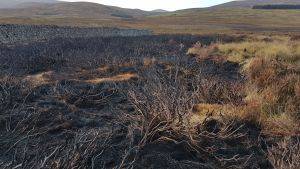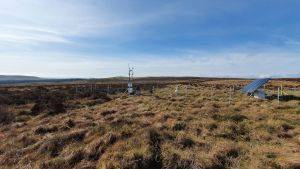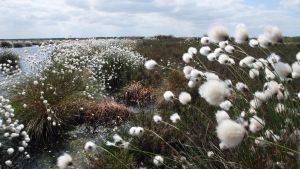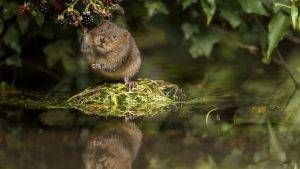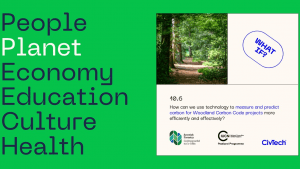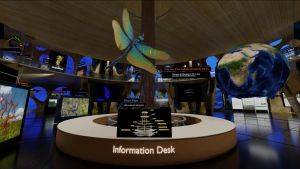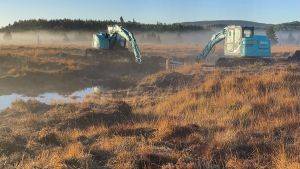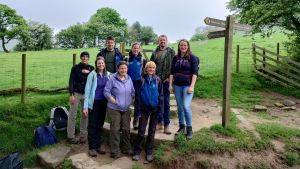The second day of our 2024 conference saw a series of knowledge exchange sessions and workshops and the discussion of issues facing peatland restoration.
FIELD-BASED WORKSHOPS
Assessing bog health using a simple condition matrix
When planning peatland restoration and assessing trajectories of change post-restoration, accurate assessment of habitat condition is of critical importance. The Peatland Programme’s Senior Research Advisor Richard Lindsay delivered a practical workshop exploring a matrix-based approach to bog condition assessment based on microtopography and associated vegetation communities. Richard introduced the methodology and how to identify assessment units remotely in a classroom session, after which delegates tested the matrix on blanket bog at Abernethy National Nature Reserve.
Additional Resources:
PDFs of the workshop slides and microtope recording form are available to download at the bottom of this page.
Our future is peat
This creative-engagement workshop initiated by interdisciplinary artist Caroline Vitzthum and members of the youth-collective RE-PEAT took participants out to Insh Marshes and Ruthven Barracks. Following an introduction to the history and archaeology of the site by Historic Environment Scotland, participants were handed out peatland-related questions posed by Year 5 students from Wood Farm Primary School in Oxford, which informed the nature of the workshop.
Participants were invited to explore Insh Marshes through three different creative exercises: Deep listening to the sounds of the marsh while performing as human hydrophones, mark mapping and exploring the textures of the peatland through responsive drawing, and embodying the many peaty layers through freeze-frame postures. These exercises acted as an invitation for participants to lose their human vocabulary, move out of their heads and more into their bodies, and listen more closely to the landscape itself.
The workshop concluded by composing answers to the primary school children’s questions, provoking participants to reflect on how the individual exercises might have offered invited them to explore peatlands through a different lens.
To find out more about Caroline’s work, visit https://carolinevitzthumstudio.com/.
To find out more about RE-PEAT’s work, visit https://www.re-peat.earth/.
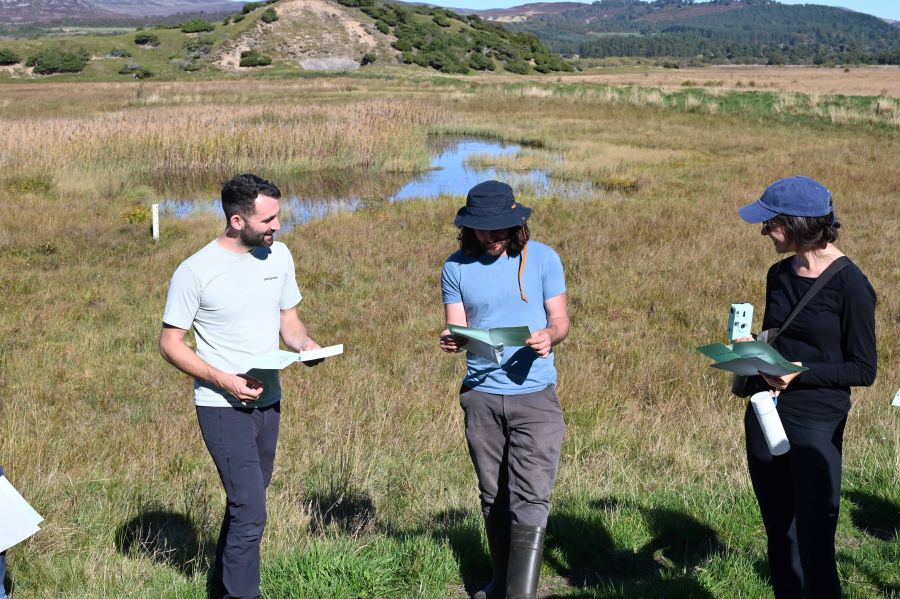
WORKSHOPS AND KNOWLEDGE SHARING SESSIONS
Working together at landscape scale on lowland peat
This interactive workshop focused on the importance, challenges and opportunities of collaboration and partnership working in lowland peat areas. Presentations were given by Sam Joyce (Defra), Megan Hudson (Fenland SOIL), Rhoswen Leonard (Natural Resources Wales) and Jack Pocock (NatureScot), each looking at the role of collaboration in projects and partnerships across the UK. In a group exercise, participants considered how cross-organisational collaboration may play out in varied, real-world circumstances, working together to assess the risks and possibilities for environmental projects on lowland peat.
Chaired by Jordan Champ and Sam Joyce, Defra
Speakers:
Introduction: Sam Joyce, Defra
Engaging stakeholders on lowland peat in the fens: Megan Hudson, Fenland SOIL
Lowland peatlands in Wales: Rhoswen Leonard, Natural Resources Wales
Peatland ACTION: Jack Pocock, NatureScot
You can view the recording below.
Translational palaeoecology and the art of collaboration: understanding the past for resilient futures
The long-term perspective on ecosystem dynamics gained through palaeoecological research can be highly informative for conservation in the wake of an uncertain future. This session explored how palaeoecology can be practically valuable for peatland restoration, providing insight on the whole story of peatland development from past climate change to the rise of human-driven pressures.
Participant discussions focused on gaining familiarity with some of the materials used within this discipline and exploring different applications of palaeoecology in peatland restoration practice. Presenters shared their knowledge from an academic and practitioner stance on what palaeoecology can offer peatland restoration and why academic-practitioner collaboration is important for realising the practical potential of palaeoecology.
Chaired by Jessica Gauld, University of Manchester
Speakers:
Introduction to palaeoecology: Jessica Gauld, University of Manchester
SWPP overview - palaeoenvironmental work: Morag Angus, South West Peatland Partnership
You can view the recording below.
Digital MRVs for Peatland Code and other projects
Digital technologies present a significant opportunity to improve the efficiency and costs of monitoring and reporting on peatland condition and associated environmental variables, but with the scale and pace of technological development, it can be challenging to understand what is reliable and applicable for peatland projects. In this knowledge sharing session, we heard from different companies and organisations on how they are creating tools to improve monitoring of peatlands.
Chaired by Miles Wilson, North Pennines National Landscape
Speakers:
Digital MRVs for Peatland Code projects: Renée Kerkvliet-Hermans, IUCN UK Peatland Programme
Surface motion methods for measuring peatland condition: David Large, University of Nottingham and Roxane Andersen, University of the Highlands and Islands
AI4Peat: Deploying AI to monitor peatland health: Anne Williams, Nick Tomline and Sam Richardson, AI4Peat
AI, machine vision and remote sensing for mapping and monitoring peatland condition: Olga Tutubalina, Gentian
Peat-MOSS: Pontus Nordin and Carlos Alvarado, Sylvera
Data driven drone solutions to support peatland restoration: Mark Currass, SEAD Artists
Plant-powered water level and temperature monitoring: Marjolein Helder, Plant e
You can view the recording below.
Diving the depths: the need for a unified UK-wide approach to peat depth
Peat depth as a defining feature for ‘deep peat’ habitats in the UK is a hangover from the post-war period when the main driver was to understand the landscape in terms of the ability to increase productivity. However, this has resulted in a definition that creates an overly simplistic approach, delineating peatland habitats by depth rather than viewing them holistically as a functional mosaic. This session explored the need for a unified UK-wide approach to peat depth in policy and legislative/regulatory contexts with supporting case studies, practitioner needs and the technical background as to why a different approach to defining the UK’s peatlands is needed.
Chaired by Dave Stone, JNCC
Speakers:
Diving the depths: Dave Stone, JNCC
Peatlands: what are we mapping? Richard Lindsay, University of East London
Peat depth and policy: Andrew Midgley, RSPB
Peat depth - regulatory and policy issues: Mark Owen, Natural England
Where, what, how? Why peat depth determines delivery: Emily Taylor, Crichton Carbon Centre
Diving the depths - a practitioner's view: Alistair Lockett, North Pennines National Landscape
You can review the recording below.
Bringing back nature: biodiversity monitoring for a greener future
Peatlands are extremely important for biodiversity, and the restoration, protection and sustainable management of these unique habitats is essential to meet our legally binding targets for nature recovery. This knowledge sharing session outlined the policy context behind existing biodiversity strategies and how peatland projects can provide the data needed to evidence progress in delivery. The session focused on the current state of play of biodiversity monitoring and the potential for technology to support us in understanding and reporting on peatland biodiversity.
Chaired by Iain Diack, Natural England
Speakers:
Peatland biodiversity: Iain Diack, Natural England
Peatland Code and biodiversity credits: Joe Anderson, IUCN UK Peatland Programme
Quantifying peatland biodiversity: A case study from three IUCN pilot sites in Scotland: Max Bodmer, rePLANET
Nature-based solutions in degraded peatland: Calum Brown, Highlands Rewilding Ltd.
Forest to bog biodiversity monitoring: Joey Pickard, Lost Peatlands Project
You can review the recording below.
Native trees, peat and dynamic landscapes
This workshop aimed to broaden perceptions of the relationships between native trees and peatlands in the context of landscape-scale restoration, following on from the National Trust webinar ‘Trees and Peat – Interactions in Ecosystem Recovery’ earlier this year. Inspiration came from Kate Hanley, RSPB Site Manager, who shared the innovative approach being taken at RSPB Dovestones. Delegates were then invited to discuss and prioritise key themes identified during the webinar and presentation and explored challenges and opportunities in relation to the restoration of natural processes. Input from this session is being used to inform a joint publication on the topic, developed by the National Trust and IUCN UK Peatland Programme. You can catch up on all the talks from the National Trust's webinar on the IUCN UK Peatland Programme YouTube channel.
Chaired by Caroline Thorogood, National Trust
Speakers:
Introduction: Caroline Thorogood, National Trust
Natural process-led land management, looking beyond Britain, learning to see the long game: Kate Hanley, RSPB
You can review the recording below.
Developing a skilled restoration workforce: training and capacity building
Accelerating the pace and scale at which peatland is being restored across the UK depends upon having a suitably skilled and knowledgeable workforce to survey, plan, deliver, manage and monitor projects. Increasingly, these skills also require a fluency in blending public and private finance. This workshop focused on the challenges of developing a skilled workforce capable of meeting ambitious targets and focused on positive action being taken across the UK to address skills and capacity gaps. Delegates considered the effectiveness of particular skills and workforce interventions; identified where the challenges are with these approaches; explored the potential for collaborative action and considered ‘what’s next’ in the development of the peatland skills supply chain.
Chaired by Becky Shaw, NatureScot Peatland ACTION
Speakers:
Peatland Skills Plan and interventions: Becky Shaw, NatureScot Peatland ACTION
Evolution of training to meet emerging needs: Emily Taylor, Crichton Carbon Centre
New Entrant Scheme in the Cairngorms National Park: Daisy Whytock, Cairngorms National Park Authority
Contractor perspective on the challenges and solutions: Rachel Urquhart, Albamontane
Restoration standards and guidance: driving innovation and improving restoration methods
In this Peatland ACTION-led workshop, Technical Advice Manager Ian McKee introduced the developing 'Scottish Peatland Standard', along with further guidance including 'Principles of restoration' and a suite of decision trees. These resources, along with Peatland ACTION's Technical Compendium will be regularly updated, incorporating feedback from practitioners. The introduction of the Peatland Standard will drive innovation and improvements to restoration methods in Scotland, in terms of their effectiveness and value for money, and help improve consistency. Presenting a series of case studies from forest to bog restoration practitioners, this knowledge-sharing session demonstrated the value of applying evidence-led restoration principles.
Chaired by Ian McKee, NatureScot Peatland ACTION
Speakers:
Introduction and Ecological restoration outcomes: Ian McKee, NatureScot Peatland ACTION
Contract manager's/designer's point of view: Tim Cockerill, Forestry and Land Scotland
Contractor's perspective: delivering quality: Peter Greening, Duncan Wemyss Ltd.
You can review the recording below.
Are we on the right track? Linear developments on peatlands
This session focused on linear developments: threats, scale, type (permanent and temporary) and associated regulations. Tracks and roads are a hidden and growing issue for peatlands, with research demonstrating impacts including chemical deposition, compaction, alteration of physical properties and divergence of vegetation communities from control areas. We presented research findings on the type, scale and impacts of linear developments, and discussed how best to mitigate them. We also considered the interplay between policy and practice, how this varies across the UK, and how to achieve greater oversight and joined-up thinking on this issue.
Chaired by David Large, University of Nottingham
Speakers:
Why discuss linear developments? Jessica Fìor-Berry, IUCN UK Peatland Programme
Developments on peatlands: David Large, University of Nottingham
Challenges in minimising the impacts of track networks on peatland hydrology and habitat - an industry perspective: Andy Mills, Offshore Wind Consultancy
Quantifying the extent of windfarm infrastructures on European blanket bogs: Guaduneth Chico, National Parks and Wildlife Service (Ireland)
Mapping UK upland tracks: Mike Shewring, RSPB
A policy perspective: Arwel Williams, Welsh Government
You can review the recording below.
Delivering community benefits from peatland projects
This workshop started with setting the scene on best practice in community engagement and benefit sharing and then worked in small groups on the following questions:
-
How do we define a community? Communities in the UK are organised in different ways, which has changed over time, creating challenges for benefit sharing.
-
How do we manage challenges around sharing revenue and the potential mismatch between expectations and reality? How do we quantify non-financial benefits and how can these be shared?
Chaired by Renée Kerkvliet-Hermans, IUCN UK Peatland Programme
Speakers:
How peatland projects can, and why they should provide community benefits, in the context of land reform in Scotland: Uwe Stoneman, Scottish Land Commission
Deciding Matters: Rachel Nixseaman, Deciding Matters
The Flow Country Partnership - An evolution over 30 years: Kenna Chisholm, Flow Country Partnership
Community participation for community benefit: Matthew Hannon, Strathclyde Institute for Sustainable Communities
You can view the recording below.


